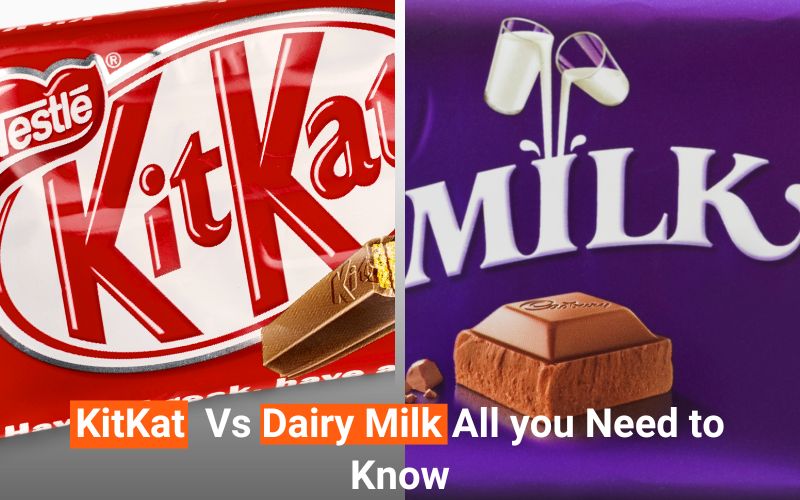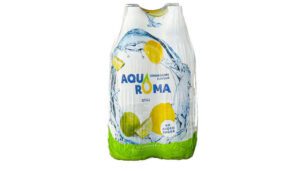When it comes to chocolate bars, KitKat and Dairy Milk are two of the most well-known and beloved brands. Both have a long history and a loyal following, but which one is better? In this blog post, we will compare and contrast KitKat and Dairy Milk, looking at their histories, ingredients, flavours, and more, to help you decide which one is right for you.
History of KitKat and Diary Milk
KitKat was first introduced in the UK in 1935 by Rowntree’s of York. Originally, it was sold as a two-finger chocolate bar, but over the years, it has evolved into a range of different products, including KitKat Chunky, KitKat Bites, and KitKat Senses. In 1988, KitKat was acquired by Nestle, and it is now one of the company’s most popular brands, sold in over 80 countries worldwide.
Dairy Milk, on the other hand, has been around for even longer. It was first introduced in the UK in 1905 by Cadbury, and over the years, it has become a household name. Dairy Milk has a distinct taste and texture, thanks to its high milk content, and it is available in a range of different flavours, including Fruit and Nut, Whole Nut, and Caramel.
Nutritional Information:
It’s important to note that nutritional information can vary depending on the size and type of chocolate bar. Generally speaking, both KitKat and Dairy Milk are high in sugar and calories and should be consumed in moderation as part of a balanced diet.
Here is the nutritional information of KitKat and Dairy Milk:
- Calories
KitKat (21g): 106 calories
Dairy Milk (45g): 240 calories
- Sugar
KitKat (21g): 10.6g
Dairy Milk (45g): 25g
- Fat
KitKat (21g): 5.6g
Dairy Milk (45g): 13g
- Protein
KitKat (21g): 1.2g
Dairy Milk (45g): 4.5g
Health Benefits:
KitKat and Dairy Milk are both popular chocolate bars that are enjoyed by many people. While they can be a tasty treat, they should be consumed in moderation as they are high in sugar and calories. Here are some potential health benefits of consuming KitKat and Dairy Milk in moderation:
1. Boost mood
Consuming chocolate can boost mood due to the presence of phenyl ethylamine (PEA), which triggers the release of endorphins that induce feelings of pleasure and happiness.
2. Improve cognitive function:
The flavonoids found in chocolate, particularly dark chocolate, may improve cognitive function and reduce the risk of cognitive decline.
3. Provide energy
Chocolate contains caffeine, which can provide a quick burst of energy.
4. Source of antioxidants:
Chocolate contains antioxidants, which can help protect the body against damage from free radicals.
However, it’s important to note that these potential health benefits are outweighed by the negative effects of consuming too much sugar and calories. So, it’s best to enjoy KitKat and Dairy Milk in moderation as part of a balanced diet.
Comparison Between KitKat vs dairy milk:
When it comes to KitKat and Dairy Milk, both chocolate bars are enjoyed by many people and offer different taste and texture experiences. Here is a detailed comparison of KitKat and Dairy Milk:
1. Ingredients
One of the main differences between KitKat and Dairy Milk is their ingredients. KitKat is made with a wafer biscuit covered in milk chocolate, while Dairy Milk is made with milk chocolate that contains at least 20% milk solids. KitKat also contains a small amount of cocoa powder, sugar, and vegetable oil, while Dairy Milk contains cocoa mass, sugar, cocoa butter, and milk powder.
2. Taste and Texture:
KitKat:
Taste: KitKat has a sweet, chocolatey taste with a slight crunch from the wafers.
Texture: The wafers in KitKat provide a crunchy texture, while the chocolate coating has a smooth and creamy texture.
KitKat has a lighter and more delicate texture compared to Dairy Milk, making it a good option for those who prefer a lighter chocolate taste.
Dairy Milk
Taste: Dairy Milk has a rich and creamy chocolate taste with a hint of sweetness.
Texture: The texture of Dairy Milk is smooth and creamy, with a slightly softer consistency compared to KitKat.
Comparison: Dairy Milk has a richer and creamier taste compared to KitKat, making it a good option for those who prefer a stronger chocolate taste.Top of Form
3. Flavour
While both KitKat and Dairy Milk are available in a range of different flavours, they each have their own signature tastes. KitKat is known for its crispy, crunchy wafer, which pairs perfectly with the smooth milk chocolate. Over the years, KitKat has released a range of different flavours, including Dark Chocolate, White Chocolate, and Peanut Butter.
Dairy Milk, on the other hand, has a creamy, melt-in-your-mouth texture, thanks to its high milk content. It is available in a range of different flavours, including Fruit and Nut, Whole Nut, and Caramel, as well as limited-edition flavours like Oreo and Dam.
4. Packaging
Another difference between KitKat and Dairy Milk is their packaging. KitKat is typically sold in a distinctive red and white wrapper, with the name of the brand prominently displayed. It is also available in different sizes, including single, twin, and four-finger bars, as well as multipacks.
Dairy Milk, on the other hand, is sold in a purple and gold wrapper, with the Cadbury logo prominently displayed. It is available in different sizes, including individual bars, sharing bags, and multipacks.
5. Price
Price is another factor to consider when comparing KitKat and Dairy Milk. Generally speaking, KitKat is slightly cheaper than Dairy Milk, with a typical two-finger bar costing around 50p, while a 45g bar of Dairy Milk costs around 65p. However, prices can vary depending on the Retailer, and promotions and discounts may also be available.
Read More: Most in-Demand Biscuits to Stock at your Retail Store in the UK
Conclusion:
In conclusion, KitKat and Dairy Milk are two of the most popular chocolate bars in the world, each with their own unique taste and texture. While both offer potential health benefits when consumed in moderation, they are also high in sugar and calories and should be enjoyed as part of a balanced diet. KitKat has a lighter and more delicate texture with a sweet, chocolatey taste and a slight crunch from the wafers, while Dairy Milk has a richer and creamier taste with a smooth and creamy texture. Ultimately, the choice between KitKat and Dairy Milk comes down to personal preference and what you are in the mood for at the time. So, go ahead and indulge in a delicious chocolate bar, but remember to do so in moderation and as part of a healthy lifestyle.





